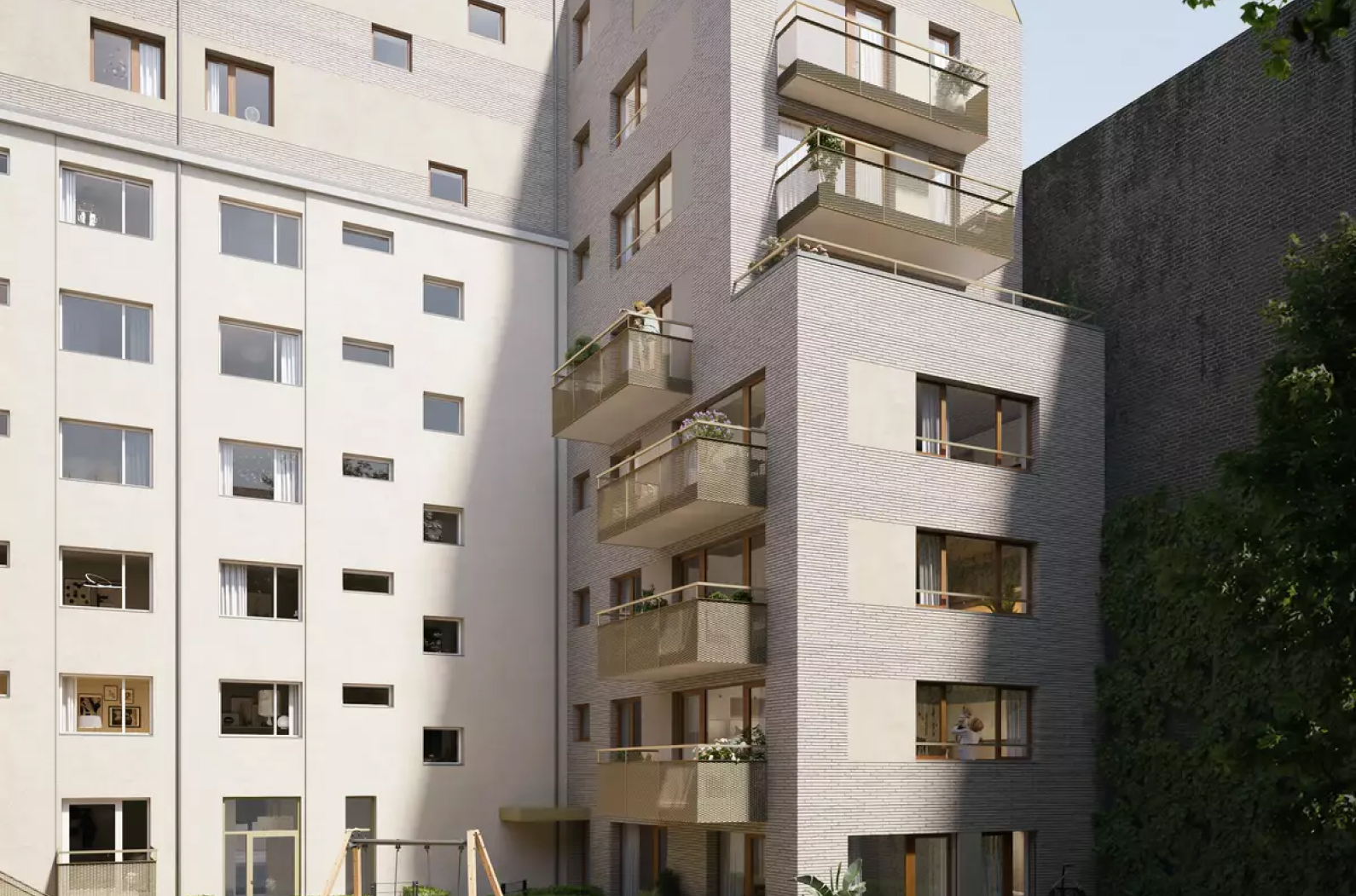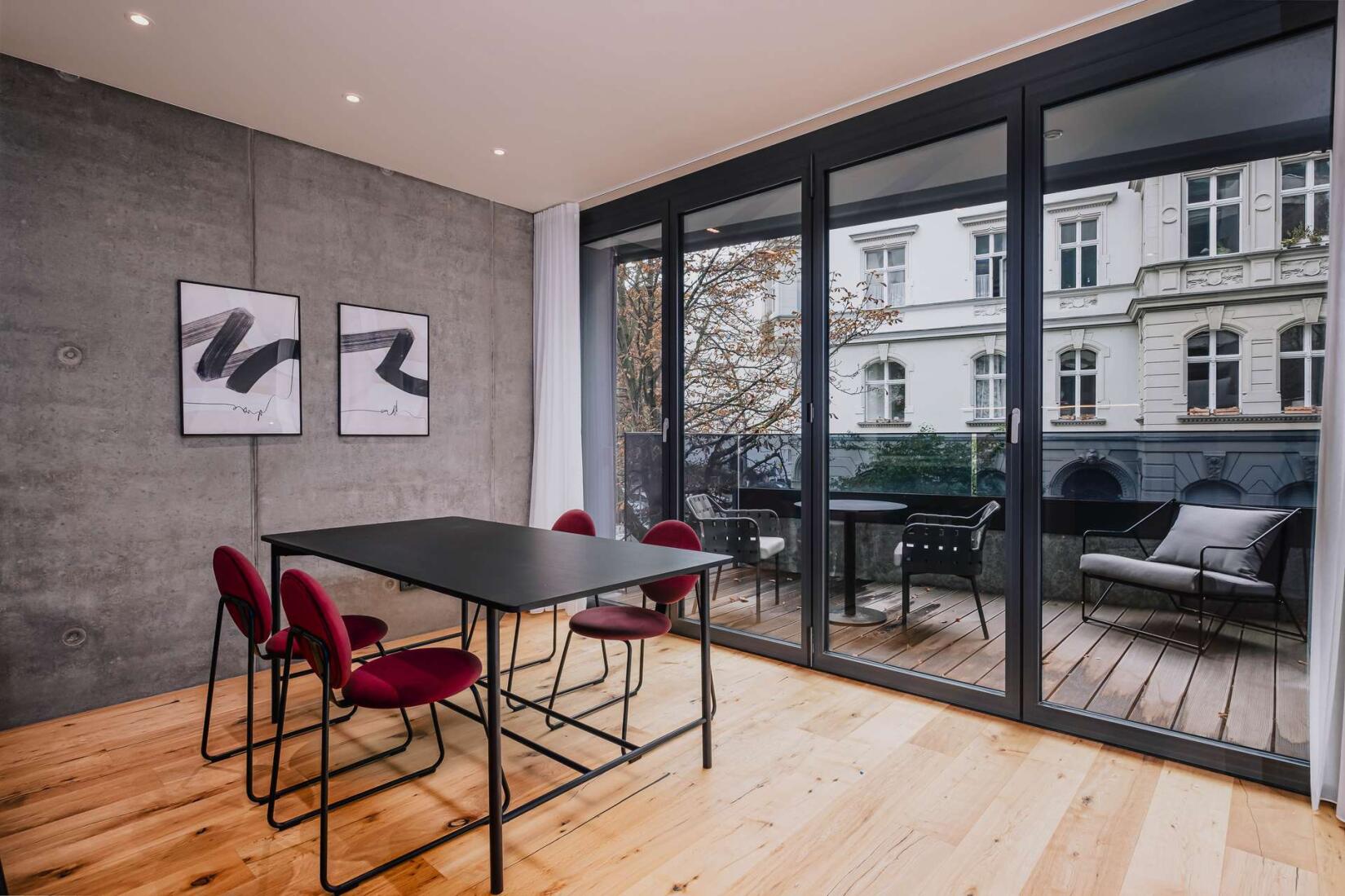
Take advantage of the advice offered by our experts and find out how you could benefit from the tax gift!
Lucrative rays of hope on the new-build horizon: with the Federal Council’s approval of the so-called “Growth Opportunities Act” in March 2024, investors were given the opportunity to benefit from annual declining balance depreciation (depreciation for wear and tear and loss of value) – or AfA for short – of 5% for rented new-build apartments.
Find out more about the conditions of declining balance depreciation and how you can make the most of this government tax break.

Tax relief as part of the "Growth Opportunities Act"
Commonly referred to as the “Growth Opportunities Act”, the Act to Strengthen Growth Opportunities, Investment and Innovation as well as Tax Simplification and Tax Fairness is intended to create attractive incentives for companies, provide innovative economic impetus and thus strengthen Germany as a competitive location. Simplification and modernization of the tax system are also key components of the law passed on 22 March 2024. This is a significantly slimmed-down compromise version of the draft bill launched by the German government in summer 2023.
Einmalige Chancen – auch für private Kapitalanleger:innen
In the case of the “Growth Opportunities Act”, the name says it all. Not only large companies and institutional investors have opportunities for economic growth, but also private investors. For them, the declining balance depreciation anchored in the law is proving to be an attractive investment incentive that could result in significant tax relief.
Have you already found your dream property and are looking for suitable financing?
Then don't hesitate and contact us today. Our experienced financial advisors will work with you to develop the perfect form of financing for you and provide you with competent and transparent support right from the start.
The declining balance depreciation (tax deduction for wear and tear and loss of value) for residential buildings in accordance with Section 7 (5a) of the German Income Tax Act (EStG) is a key part of the recently passed “Growth Opportunities Act” and a tax measure aimed at stabilizing the construction and real estate sector and significantly boosting new residential construction in Germany. The faster refinancing of investments made is intended to create market-stimulating incentives and urgently needed living space.
In the case of declining balance depreciation, you can write off 5% of the investment costs for buildings used for residential purposes each year (in this case, you do not have to use the straight-line depreciation method). This depreciation option only applies in two cases: Firstly, either you build the building yourself (or have it built directly on your behalf): in this case, you can claim declining balance depreciation if construction of the building begins after September 30, 2023 and before October 1, 2029. The start of construction is deemed to be the start of construction notification. Secondly, you buy a building: In this case, the declining balance depreciation is only possible if the obligatory contract is concluded with legal effect after September 30, 2023 and before October 1, 2029. In addition, the property must be acquired by the end of the year of completion, which requires the transfer of benefits and encumbrances by the year of completion (Section 7 (5a) EStG). There is no upper limit on construction costs.
Depreciation is based on a 5% rate by which the assessment basis is reduced annually. If the building is completed or the transfer of benefits/encumbrances takes place on January 1 of a year, 5% of the investment costs of the building can be depreciated in the first year. In the event of completion or a change of use/encumbrance during the course of the year, depreciation is reduced by 1/12 in the first year. From the second year onwards, however, the percentage is applied to the residual value of the building in the previous year. The depreciation reduces the taxable income and could therefore lead to direct tax savings.
In contrast to straight-line depreciation, declining balance depreciation captures the effects of wear and tear dynamically and thus reflects the loss in value of residential buildings much better. If a building previously allowed 3% straight-line depreciation, for example, you could continuously deduct 3% from the original acquisition or production costs for tax purposes. With declining balance depreciation, on the other hand, you can claim higher depreciation for tax purposes in the first few years in particular, whereas this is reduced in later years due to depreciation of the residual value.
This could result in potential tax savings and liquidity advantages for you, such as
- significantly higher depreciation amounts in the first few years
Faster refinancing of investments made
Degressive depreciation
- Dynamic depreciation
- 5% deduction
- Significantly higher depreciation amounts in the first few years
- Realistic depiction of depreciation
Straight-line depreciation
- Uniform depreciation
- Different: 3% for residential buildings completed after 31.12.2022
- Constant depreciation amounts, therefore higher in later years
- Rather unrealistic representation of depreciation
It is possible to switch to straight-line depreciation. We will be happy to explain to you in a personal consultation when and under what conditions a switch makes sense.
- Government tax gift
- Realistic depiction of the reduction in value
- Significantly higher deductions possible in the first few years
- Faster refinancing of investments made possible
With these ZIEGERT properties, you could benefit from the 5% tax break
In case you are not finding what you’re looking for: During a personal consultation, our real estate experts will be happy to show you more of our numerous ZIEGERT investment properties where you could benefit from the advantages of declining balance depreciation.



You can also benefit from other market components
In addition to the attractive tax depreciation options offered by the declining balance method of depreciation, other market factors also suggest that a property purchase at the present time could pay off significantly in the near future:
- Increasing housing shortage with increased demand for living space
- Significant decline in building permits and starts
- Population growth in metropolitan regions such as Berlin and Leipzig
- Falling average pensions and the resulting need for private pension provision
- Falling interest rates
- Rising real estate prices and rents
